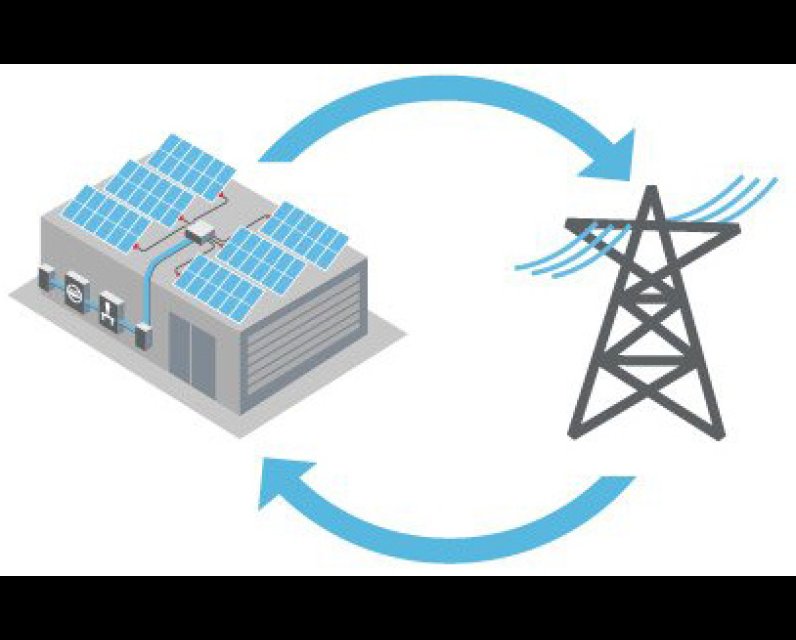Unpublished Opinions
Graeme Boyce, an avid scuba diver and amateur historian, has had a successful career in business as an “agent of change”, and independently writes articles involving the struggle of people. Over the past twenty years, Boyce has participated in the growth of many exciting ventures across several industries, such as travel and tourism, entertainment and media, and new technology.
Currently, he is CEO at Solamon Energy having written its business plan, as well as various strategies and communication plans. His corporate responsibilities over the past five years have included traveling extensively across South Asia, North America and Europe, as well as throughout the Caribbean and Central America to meet leaders, both elected and appointed, advocating the implementation of renewable energy solutions.
The Democratization of Energy

I have enjoyed a long and rather curvy career in a variety of industries, beginning in the late 70s at Ontario Hydro and based on my travels these past five years, I have written a brief letter in the hopes leaders in developing nations will drop their guns and begin to work toegther and solve the problems of the people - and their children - who need power today.
A long time ago, while working at Ontario Hydro, first as an expeditor and then a buyer in their Nuclear Generation Division, I experienced a rare glimpse into the real development of not only a new power plant but also one offering an innovative technology to a hungry global market, hungry for power. Branded Candu, visionary engineers had designed and implemented a fission-based system, utilizing a reactor that heated (heavy) water and its steam to fuel an electrical generator on a very massive level and deliver to the people a constant supply of cheap power.
Ontario Hydro was originally formed in 1906 to transmit electricity, privately generated at Niagara Falls, across a very large province. The company learned quickly how to accrue and profit from a growing customer base, and service debt while ambitiously planning with civic officials and industry leaders a brighter future. Ontario comprises an area larger than France and Spain combined, it is three times the size of Germany or roughly the same size as Texas and Montana combined. In 1999, for numerous reasons, Ontario Hydro was broken up and its generation facilities re-formed into Ontario Power Generation (OPG).
To make successor companies more attractive for enlightened investors, its $19.4 billion in "stranded debt" was placed under the control of the Ontario Electricity Financial Corporation, which is being paid down through a 0.7 cent/kWh tariff on all power, all income taxes paid by all operating companies, and all dividends paid by both OPG and Hydro One. By managing this debt, Ontarians pay some of the lowest electricity rates in the world, and enjoy a surplus to export.
Introduced successfully during our Atomic Age, the technology driving Candu went through several phases of implementation over the next few decades, and the first truly large-scale units that each delivered over 500MW were located near Toronto in Pickering. Proponents of the Candu reactor knew uranium used in the heating process could not in turn be used to create nuclear weapons and thus, as opposed to its competitor the fusion reactor, was considered a safe alternative to help solve the energy crisis in the 70s.
The original four units at Pickering were deemed a success, based on their ability to generate and distribute electricity to a growing population efficiently and effectively, and thus Ontario Hydro built four more, while also beginning construction at Darlington a few miles to the east, as well as at Bruce to the west. Balancing the cost were the foreseen health benefits of a clean solution (notwithstanding the issue of Tritium leaks), and the commissioning of these huge nuclear power facilities allowed Ontario Hydro to actually shut down its array of aging and costly coal-fired plants.
It was and is very expensive to build and manage a nuclear power plant, on many levels, especially when considering the alternatives. Nevertheless, despite the capital costs, the decision to proceed in the face of local opposition and foreign competition, enables the people of Ontario today to pay less than 10 cents/kWh for their electricity. A century ago Nikola Tesla envisioned that his electricity would be delivered freely to the people, wirelessly, but people in developing nations, with the luxury of a connection, pay five times per kWh what Ontarians pay.
In essence, anywhere, the people pay. They always do. Thinking big, some people have had the ability in days gone by to create utilities and simply pass along the costs of development, including designing, procuring and commissioning, as well as distributing electricity, to the public. The launch of these entities was based on the assumption people would pay for what they used, and the corporation itself could collect monthly payments ad infinitum. By controlling the delivery of power around the world these public utilities have become very powerful.
Because the people of Ontario knew Tritium leaks posed a danger, again at a massive cost, leaders undertook to integrate and deliver renewable energy solutions, and extensive wind and solar farms have been implemented and connected to the grid over the past decade. Looking into the future, to assure continued growth and prosperity, regulators and engineers these days are working on energy resiliency and storage issues, and establishing local microgrids.
Yes, microgrids.
With populations booming, therein lies a consumer base of unparalleled proportions in human history, a veritable marketers dream of untapped potential, growth certainly not unnoticed by governments, and especially by the bankers to the many developing nations who see a tremendous asset in the dutiful collection of taxes and debt annually ad infinitum. Populations across the world are not going to decrease (despite wars, diseases, disasters, catastrophes and famines) and therefore neither will taxes nor debts. These are bankable facts.
Spanning all seven seas, governments are thus responsible for maximizing tax revenue - to improve communities collectively, from providing educated and healthy citizens, to integrating energy and infrastructure systems - for the common good; and corporations sales revenue, typically offering things we don't need: "new and improved" products and "latest and best" services marketed to encourage the spending of disposable income, reduce savings and encourage debt to enjoy daily life, and to feed and keep warm, clean and busy individual families.
Among developing nations, utilities set up long ago to provide electricity to foreign-owned factories and resource processing plants are no longer useful, as these rapidly evolving societies now need more power and a much bigger supply of electricity than envisioned during a distant exploitative and still resonating colonial era. Monopolistic utilities traditionally located in capital cities, transportation hubs and urban centres cannot deliver electricity to remote and rural and growing areas. They simply do not have the time to create national grids.
The solution is to develop innovative microgrids and supply locally produced electricity into adjacent communities. The sun may not always shine and the wind may not always blow, but when conjoined together with appropriate storage systems - from the many available - they offer a tantalizing and formidable prospect for leaders tasked with the responsibility of providing power to the people.
A revolution took place in the mid-80s while I worked in the Entertainment Industry. The Digital Era descended upon recording studios and, in the Music Industry, encoded discs soon enough had replaced grooved vinyl on shelves. Many people lost their jobs, as they had when combustion-powered cars replaced horse-drawn carriages. Critically, once powerful corporations were toppled when the people realized they could - by using digital technology - record and produce their own music and their own films. Nowadays they can also as easily distribute their valuable content instantly to targeted audiences.
Similarly, with the advent of microgrids, mini-grids, smart grids or nano-grids, whether powered by solar panels or windmills, augmented by storage - from batteries to flywheels, compressed air or pumped hydro - these systems will democratize the production and distribution of energy, without the need for cables and transmission towers or the burdensome cost of overhead in the management of these antiquated delivery mechanisms that perpetuate large-scale debt vehicles.
Local communities can foster their own growth at their own pace, and provide power to the people: solar powered cold storage facilities, solar powered irrigation systems and solar powered cars are here now, and to be implemented requires a bit of vision and a bit of courage. The time is now to make a decision... building a better future together, to quote an old adage, begins with you. Do it.



Comments
Be the first to comment